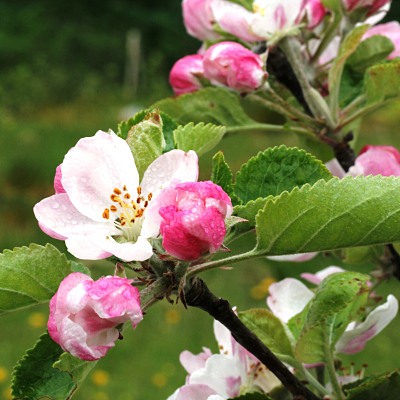
In the first part – Beginner's Guide - Part 1 - we looked at how or choose the right fruit for you, and also had a look at pollination groups. Now we delve a little deeper into the knowledge you need to choose your new trees, by looking at rootstocks and then a quick overview of the shapes and sizes of tree you can buy.
Almost no top fruit will come true from seed. Plant 5 pips from your supermarket Braeburn apple and you will produce 5 new, genetically unique trees. Depending on the pollen that pollinated that particular tree, you may end with one or two quite similar, but you may also produce a crab apple, or a tree prone to pest and disease. It’s a biological lottery, but what is certain is that they will not be Braeburn. This goes a long way to explaining why there are 6000 odd named varieties of apple known in the U.K. Luckily the Romans, in between building straight roads and aqueducts, worked out that you could physically attach either a bud or apiece of new growth from the tree you wanted to reproduce to a rootstock, and you would end up with an identical clone. Originally, they would have used seedling trees for the rootstocks, but there has been a lot of breeding done in the past 100 years which has produced a range of stocks which can control growth and improve disease-resistance. Selecting the right one for the size and shape of tree you want is crucial to long term success.
Before I list the various rootstocks commonly used, there are three general points that it is worth bearing in mind:
1 choosing a dwarfing rootstock is not a substitute for annual pruning. Pruning is essential to keep you tree happy, healthy and producing the best quality fruit. You can also use it to keep trees under control and at the right size for their position. So don’t just opt for the smallest rootstock and think you can then neglect the tree - it’s often more beneficial to use your secateurs instead to limit its growth.
2 growth and vigour are also greatly affected by the particular site and soil in your garden. Poor soil, or a cold and windy site will reduce the size of the tree, compared to the same tree on the same stock grown in a sheltered garden in the warmer south of the U.K. Growth figures quoted in books and websites tend to be what you can expect in Kent or Surrey, you’ll get a tree up to a third smaller if you are planting 800 feet up in the Pennines.
3 if you are trying to grow top fruit trees in pots (and it is certainly possible), bear in mind that this will also have a dwarfing effect on the growth of the tree. Safest to go at least one size up in terms of vigour of rootstock to counteract this - a very dwarfing rootstock grown in a pot risks ending up as a bonsai and will not produce much fruit.
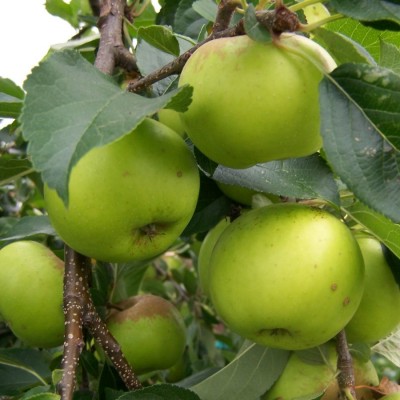
Apple rootstocks:
Dwarfing: M27, M26. These will produce trees which fruit at a very young age. Trees on these will need staking and are shallow rooting, so can be affected by drought. Produce trees between 2 and 3m at maturity.
Semi dwarfing: MM106. Generally, do not need staking and are resistant to pest and disease such as woolly aphids. Take a year or so longer to start producing fruit than the dwarfing rootstocks. MM106 is probably the best choice for a general garden tree in the north of the U.K. 3- 4.5m.
Vigorous: M25. Produces a traditional orchard tree of 7 or 8m tall. Slow to fruit, but trees of this size are a majestic sight once mature, and will produce very heavy crops once they get going.
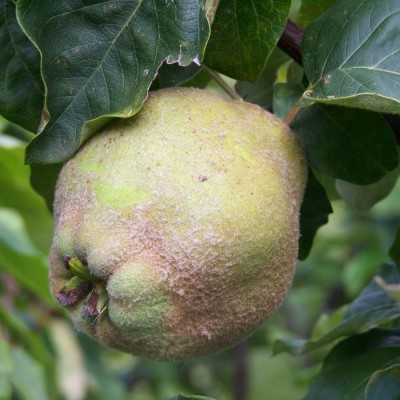
Pears and quince.
Dwarfing/ semi dwarfing : Quince A. Start to bear fruit when 5 or 6 years old. Suitable for most garden trees and trained forms.
Vigorous: Seedling pear. Produces a traditional orchard tree 7-8m tall.
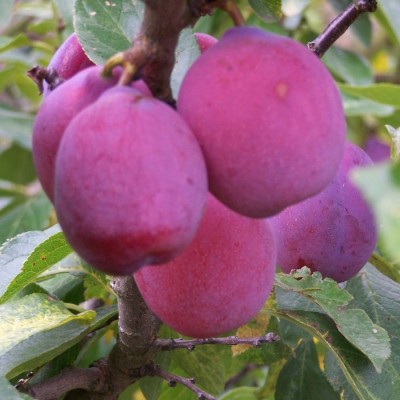
Plums, damsons, gages, peaches, nectarines and apricots.
Dwarfing/ semi dwarfing. Pixy, St Julian A. Pixy is the most dwarfing, and has good disease resistance, but does not tolerate drought or exposed sites well. In that case, choose St Julian A for a garden tree.
Vigorous: Brompton, Myrobalan B. Tolerant of most sites and soils, producing large trees 6-8m tall.
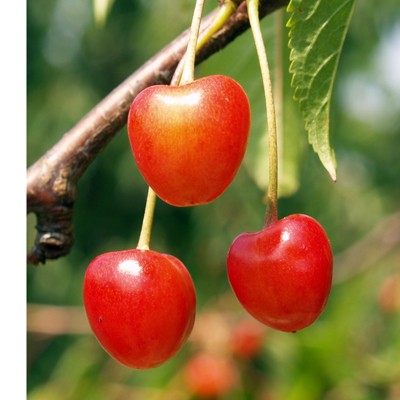
Cherries:
Dwarfing/ semi dwarfing: Gisela 5, Colt. The Gisela stocks are the smallest, but can suffer in cold sites or poor soils. Colt is a more vigorous so a better choice for the north.
Vigorous: Avium F12-1. Produces large orchard trees, about 7m tall.
So, you’ve decided on the right variety, picked the correct rootstock- the final thing is the size/ shape and age of tree. If you are buying from a local garden centre, the choice will probably be limited to ‘bush’ trees in containers. The advantage of buying a potted tree is that they are available pretty much all year round, and you plant at any time (although best to avoid the hottest and driest summer months). Buy from a fruit tree specialist such as ourselves and you will find a much wider choice of bare root trees. These are trees that have been grown in our nursery fields, and are then dug up in the winter months while they are dormant. Whilst they are normally a little less expensive than potted trees, and have a better root system, they are only available between November and March, so you need to plan ahead.
Bare root trees are also generally available in a wide range of sizes and ages. You will be able find ready-trained forms such as cordons, fan-trained and espaliers, but if you are looking for a ‘normal’ freestanding tree, you will be choosing from one of the following:
Maiden. Just like the racehorse, a maiden is a one year old. They are normally a straight stick about 1 -1.2m tall when you buy them. They may have some small feathered side branches, they may not - this depends entirely on the specific variety, where they were grown and the weather during the growing season. They are the most economical option, costing around £18, and are the basic building block - you can grow them on into any number of different shapes. Depending on the rootstock, you will have a wait if 3-5 years before you get fruit.
Bush tree. Normally three years old, these are small ready formed trees. We have pruned the trees to have about 80cm of clear stem, before the branch canopy begins. The tree will be about 1.2 -1.5m tall when you buy it. Slightly more expensive, at about £30, but you are 2 years closer to getting your first crop. Normally the best option for a garden-sized tree, as you can pick, prune etc from ground level.
Half standard. A 3 or 4-year-old tree, trained to have more clear stem before the branch framework starts (about 1.2m). Around £40. These make lovely larger trees if you have space, but depending on the rootstock use can get to 5-7m tall when fully grown. You will need a ladder to pick the fruit.
All the knowledge you need to make an informed choice and take your first steps into growing your own fruit. Get planting!

